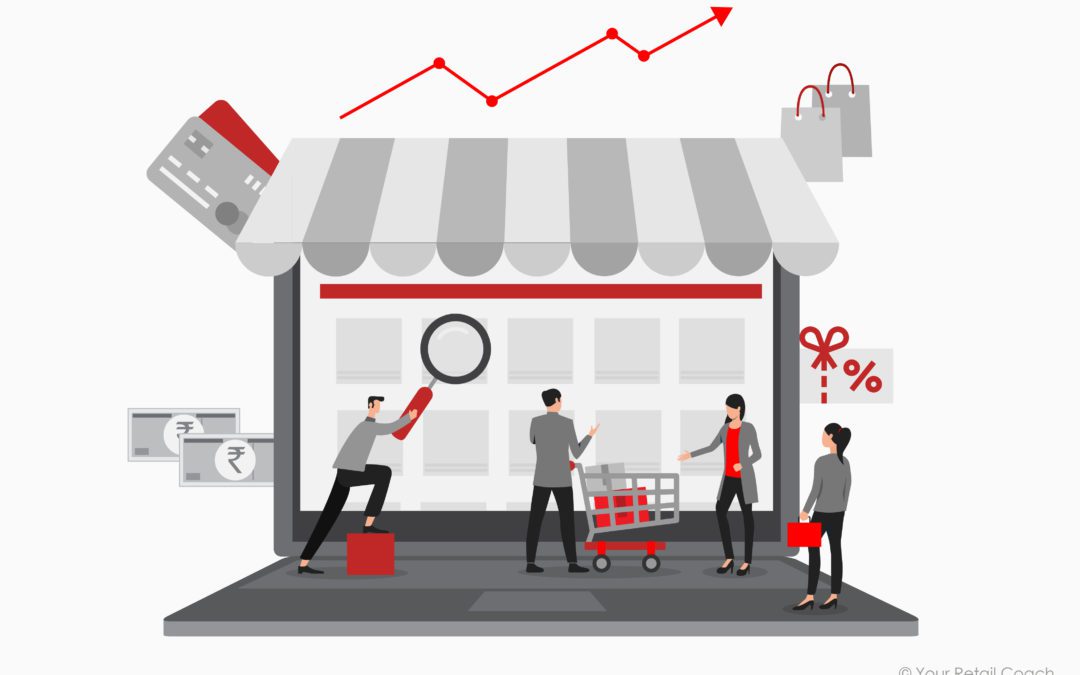With an increasing online retail sales and growing popularity of e-commerce, opportunities galore but it is not easy to decode the Indian e-retail market. Outsourcing could be the answer.
The retail market in India
India is the fifth largest retail destination in the world and its retail market is projected to grow from USD 672 billion (2017) to USD 1200 billion by the year 2021. A growth rate that is almost double. However, India’s consumer expenditure is far beyond what its existing domestic and foreign retail players could cover. India’s consumer expenditure is expected to reach from USD 1824 billion in 2017 to USD 3600 billion in 2020. A gap analysis is show in the table below:
| Year | Consumer Expenditure (USD Billion) | Retail Market (USD Billion) | Gap (USD Billion) |
| 2017 | 1824 | 672 | 1824-672 = 1152 |
| 2020-21 (F) | 3600 | 1200 | 3600-1200 = 2400 |
| Source: www.ibef.org | |||
That’s the gap which many foreign and domestic retail players seek and will seek to capitalize on. How many retail businesses could touch the 1 billion mark? And here are 2400 opportunities to capture one by 2020-21.No wonder that such statistics make India an attractive retail destination powered by its demographics and demand.
Why e-retailing in India?
The online retail market in India is currently one-fourth of its organized retail market and is growing at a CAGR of 23%. It is expected to reach USD 170 billion in the next ten years. And these figures are like nothing as compared to the ever growing retail market appetite of India.
Further fuelling the data-driven optimism about the online retail market in India are the ever increasing number of smartphones users and the improving level of internet penetration in the country. The number of smartphone users in India is expected to touch 859 million by 2022(from 468 million in 2017) and the level of internet penetration stood at 32% (432 million internet users) in December 2017 followed by 40% (566 million internet users) as of December 2018and is expected to hit 45% (627 million internet users) by the end of 2019. And the mobile phone remains the common device for internet usage for as much as 97% of the total users.
Given such bright market statistics, high smartphone usage and internet penetration, price and process transparency, and the economies of operation and convenience of management with online channels, retailers have strong reasons in turning towards e-tailing.
Also, because of India’s wide geographical spread, e-retailing becomes an obvious choice for better market penetration geographically.
Challenges in e-retailing and Outsourcing
Opportunities galore but it is not easy to decode the Indian e-retail market and establish a strong footing here.
E-Tailing
Despite having web stores even the big brands fail to attract the retail customers to their own online channels as the online marketplaces have become more favorable with customers. And the competition is intense at the popular online marketplaces like Amazon India and Wal-Mart-Flipkart. In the latest festive season sale of October 2019, these two companies claim to have recorded extraordinary sales. So, the retailers who went live with the right strategies had to gain from such events massively promoted by the online marketplaces. However, one big demerit with online marketplaces is that the end customers hardly get to know the retailer. There are SME retailers with over thousands of positive product reviews and 4+ rating but their end customers barely know them. Branding takes some serious beating here.
Your Retail Coach (YRC) helps domestic and foreign retail players with their web store and online marketplace sales management strategies and practices with a focus on developing brand awareness.Our experience and expertise in both offline and online retail channels will help businesses quickly establish their retail operations and set their brands in motion.
Inventory & Logistics:
Also, in a vast country like India with its mature and burgeoning retail market, inventory and logistics can no longer be done in the traditional ways.At the same time, it is very difficult for the small and medium scale retailers to set up advanced technological and infrastructural platform for inventory and logistics which is why they are on the bandwagon of the online marketplaces. It may be even more challenging for foreign retail players seeking to enter the Indian retail market to set up its own inventory channel, associated technologies and infrastructure.
YRC assists retail players in managing their warehouses via services and support in procurement, supply chain, warehouse operations, inventory management, dispatch and team management riding on proven models of logistics and use of technology.
Distribution:
Establishing and managing the distribution network in a vast country like India poses yet another stiff challenge to retailers. The inventory often has to pass through two or more states or territories. There often are multiple entities involved. Knowledge and understanding of the domestic and local distribution networking’s critical.
YRC provides the necessary assistance to businesses in setting up and maintaining a robust distribution network across the country.
Omni-channel:
Online marketplaces offer great opportunities not just in achieving quick sales but also in learning and intelligence for business. However, brand dilution is a possibility retailers must not ignore here.Apart from taking advantage of the online marketplaces, retail businesses also need to focus on their own web and physical stores. A strategic balance between online and offline retail channels needs to be maintained especially bearing in mind that by the year 2021 traditional retail is projected to hold a massive 75% of the total retail market in India.
With its domain experience and expertise in the retail sector, YRC not only helps retail players in managing online sales channels but also in setting up brick and mortar retail stores and provide a range of operational assistance services.
For any further query or assistance, just leave a ping at our website’s chat window or you can directly call us at the provided numbers.







